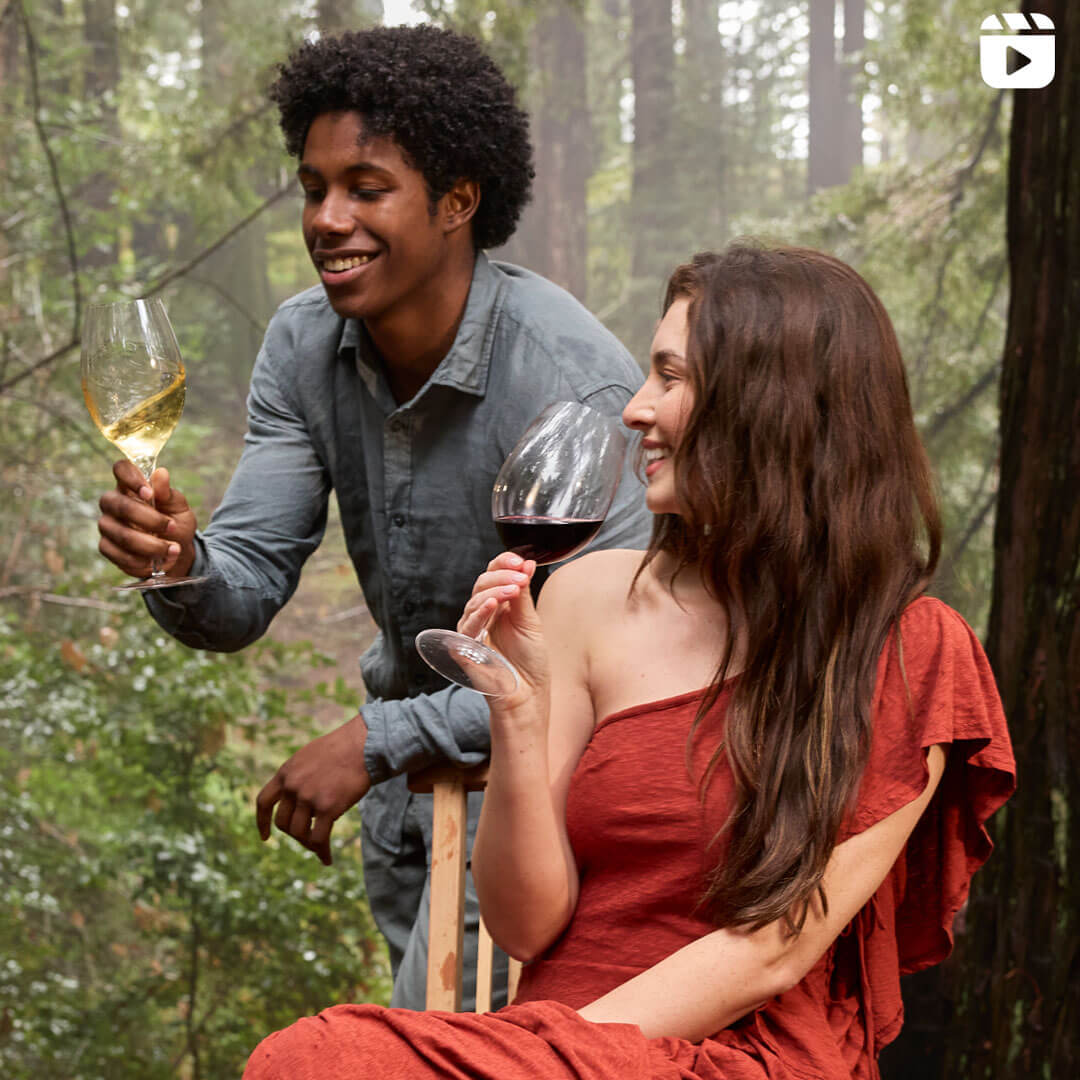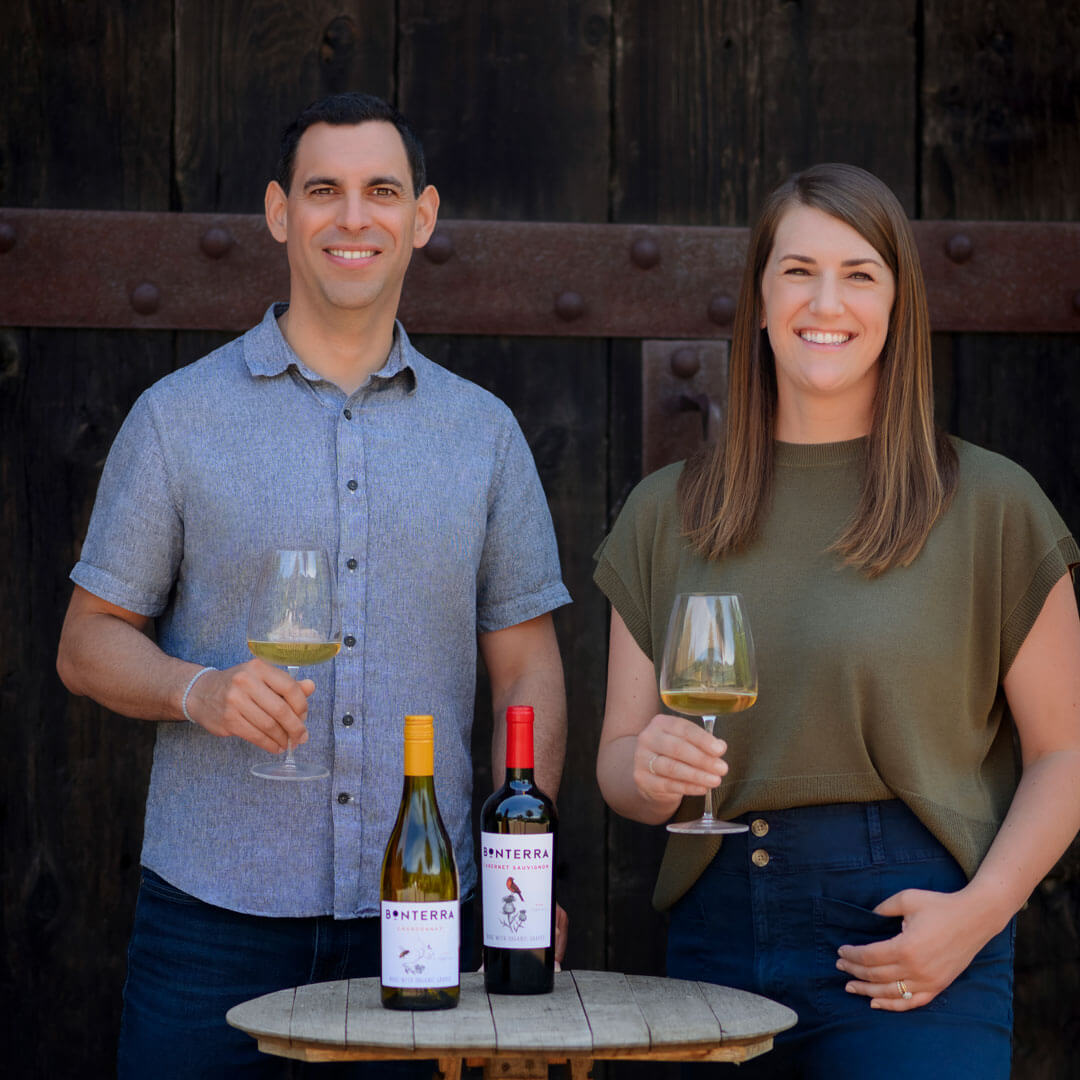If you’ve ever wondered how long a bottle of red wine will stay delicious after you’ve opened it, you’re not alone. Who hasn’t had the sad experience of dumping unrecognizable remnants of a once-delicious opened bottle of wine down the drain?
Several factors impact how long a red wine will taste good after you’ve pulled the cork. And the good news is, you can control almost all of them! Knowing these details can help ensure you enjoy all your red wines to the last drop.
Understanding Red Wine Oxidation
The biggest culprit behind your ruined bottle of wine is oxidation – the natural chemical process that unfolds when wine is exposed to air. Think about what happens when you cut a fresh apple and leave the inside of the fruit open to the air: the flesh starts to turn brown, and the flavors change – typically becoming muted, dull, and sometimes a little nutty. Oxidation is to blame.
Just as happens with apples (and artichokes, celery root, and many other foods), oxidation changes the aromas, flavors, and colors we experience in wine. While some oxidative reactions can be good up to a certain point (think about how some wines open up to become more fragrant with a few minutes of air), and sometimes the oxidized flavors are the goal (think sherry), we generally enjoy red and white wines most before they’ve oxidized too much.
Wines with higher levels of tannin and acidity tend to oxidize more slowly. This is why red wines can often age better than white wines – the tannins and other antioxidants red wines pick up from contact with grape skins and (sometimes) oak barrels, which provide tannins of their own, help to slow down the oxidative process and extend the ageability of the wine even after it’s been opened. Sulfites can also help slow down the oxidative process, which is why so many conventional wines have high levels of added SO2.
Typical Shelf Life of Opened Red Wine
Because red wine grapes naturally have different levels of tannin and acidity, they naturally oxidize at different rates.
Generally speaking, lighter-bodied red wines without a lot of tannin, like Pinot Noir, will last two or three days at room temperature after being opened. If the wine has plenty of fresh acidity, it can probably hang in there a bit longer. Red wines with full-bodied tannins, like Bonterra’s Cabernet Sauvignon or Syrah, are more likely to last four or five days.
Of course, these general timeframes will vary based on how much tannin, acidity, and sulfites are in each individual wine. And – just as important – on how you stored the wine before and after opening it.
Tips for Preserving Opened Red Wine
Proper wine storage is crucial to preserving your opened red wine. There are three main ways to extend the life of your open bottle of red wine: keep it closed, keep it cold (and dark), and keep the air out.
Keep it closed. If you know you’re not going to finish a bottle in the next hour or two, it’s best to keep the cork in the bottle as much as you can. As soon as you finish pouring a glass, re-cork the wine. This will minimize both (1) the amount of air the wine is exposed to, and (2) the amount of time the wine is exposed.
Keep it cold and dark. When you’ve finished pouring a wine for the evening, don’t store it on the kitchen counter or sideboard. Light and heat help to accelerate the chemical changes of aging and oxidation (as we discussed in our blog on how best to store unopened wine). The best place to keep your opened bottle safe is in a refrigerator, sealed with as little air inside as possible (a wine fridge is best). Just remember to take the wine out of the fridge well before you plan to drink it, since red wine generally tastes best when it’s 55-65 degrees Fahrenheit. Light, fruity reds can be very enjoyable at the lower end of that scale, but aim to serve fuller-bodied reds when they’re back at 60-65 degrees.
Keep the air out. The challenge of preserving open bottles of wine is not new, and humans have devised all kinds of clever ways to help combat oxidation chemistry.
- Wine Stoppers. The most common wine preservation tools are probably rubber wine stoppers, which seal off the neck of the bottle more completely than cork. These effectively prevent more air from getting in, but don’t do much to help with what’s already inside the bottle working its oxidative black magic.
- Smaller Bottles. Pouring your leftover wine into a smaller bottle is the simplest way to eliminate that pesky air in your original bottle. Choose a vessel that minimizes the head space between the level of the liquid and the seal, so the new bottle is as full as possible with hardly any air inside.
- Vacuum Pumps with Stoppers. These simple, inexpensive wine preservers allow you to both create an effective airtight seal, and to pump out the air that’s inside. This one-two punch dramatically slows down oxidation and can extend the life of your wine by several days. Left undisturbed in the fridge, some opened wines can stay fresh this way for weeks! Every time you open the seal, though, you’re introducing new air that needs to be pumped out as soon as possible.
- Inert Gas Preservers. These newer tools outsmart oxidation by using inert gas like argon to shield your wine from the flavor-changing elements in your bottle. Because argon is a heavier molecule than oxygen, it naturally sinks down below the oxygen and comes to rest on the surface of the wine. This blanket of argon prevents the wine from touching and interacting with any other elements in the air, and also helps prevent microbial growth within the wine. Some inert gas preservers use nitrogen or a mix of gasses to blanket the wine, but argon is generally considered the gold standard because it has the lowest reactivity with the chemical compounds affecting flavor and aroma. As with vacuum stoppers, you will need to re-seal the wine bottle every time you re-open it in order to maximize the life of your wine.
When to Discard Opened Red Wine
As a wine lover, You probably don’t need us to tell you this. If a red wine doesn’t smell or taste good to you anymore, it is a bad wine, and it’s time to say goodbye. This is highly subjective, of course, so use your own senses of smell and taste to determine where you draw the line.
Red wines that have been open too long generally will have a sharp, vinegar-like smell, a dull or brownish color, and a flat or astringent taste. But bottom line: If you don’t like it anymore, it’s time to discard it and open something else. No one wants to drink spoiled wine.
Hopefully, now that you know how to slow down oxidation with environmental conditions and wine preservation tools, you can keep your favorite red wines tasting fresh and delicious as long as you need to enjoy them.
Now that you know how to preserve your favorite leftover red wines, why not put these tips into practice with some exquisite, organically farmed Bonterra wine? Buy wine online from our organic winery today to explore our range of premium red wines, perfect for any occasion. Don’t miss our premium red wine variety bundle and Cabernet Sauvignon gift set, each offering a curated selection of our finest varietals. Don’t miss our premium red wine variety bundle and Cabernet Sauvignon gift set, each offering a curated selection of our finest varietals. And for an exclusive experience, consider joining our Wine Club for special offers and access to our latest releases. Cheers!




